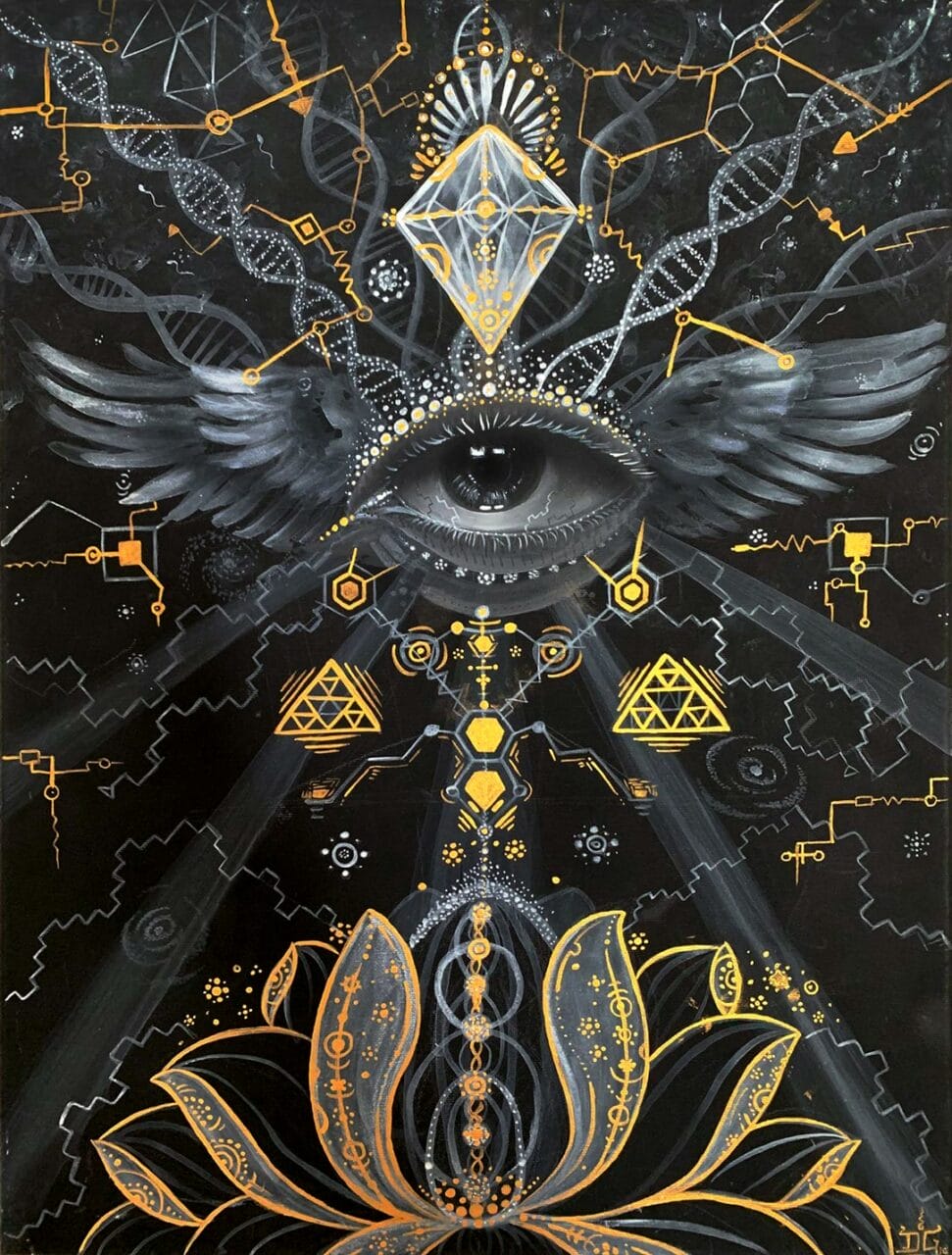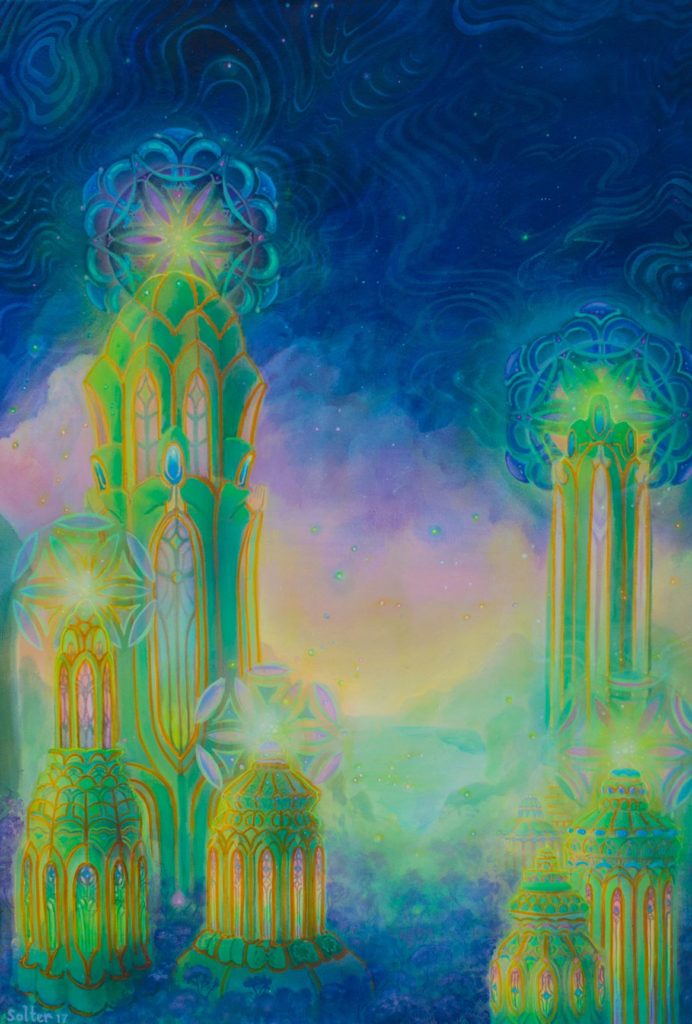
© Uni Kaya
The Historical Journey of Shrooms
The existence of Shrooms can be traced back to 9000 BC, according to historical evidence. These unique mushrooms, which have over 200 species, contain psilocybin that triggers hallucinogenic effects. The effects can range from altered perception and sensory hallucinations to profound spiritual experiences. For millennia, these mushrooms have been used in spiritual ceremonies and rituals across diverse cultures and tribes. Most of these historical uses originate from North and South America.
Shrooms in Ancient Times
Over time, many cultures have made use of natural psychedelics. Evidence from the Sahara Desert suggests that humans used Psilocybe Cubensis over 7000 years ago. Archaeological findings show the depiction of this mind-altering substance in prehistoric art across diverse regions. For instance, indigenous tribes from the Sahara in North Africa portrayed its usage in their paintings dating back to around 9000 BC. Likewise, the renowned Selva Pascuala mural rock painting in Spain, roughly 6000 years old, indicates the use of Psilocybe Hispanica in religious rituals. The influence of these substances on our cultural evolution, religion, art, societal norms, and everyday life is becoming more apparent. This substance has undeniably made a profound impact on our culture and society.
A Brief History of Shrooms Usage
Historically, magic Shrooms have been in use for a long time. The psychoactive substance that we know today has been around for many centuries, with various practices related to its use. Who could resist the offerings of nature? It’s about time for Magic Mushrooms Montreal Canada to delve into the historical path that led Shrooms to its current state.
Main Highlights
- Dried Shrooms have been employed in traditional rituals and spiritual healing over the ages. Presently, they are used as a treatment for mental health disorders.
- Shrooms became a hallmark of the hippie culture and played a significant role in the psychedelic revolution, encouraging its recreational use.
- Prominent figures like Wasson, Sabina, and McKenna introduced psilocybin to the contemporary world.

© Jonathan Solter
Backing the Stoned Ape Theory
The Stoned Ape Hypothesis was introduced by Terence McKenna as a theory suggesting that psilocybin could have contributed to the cognitive development of humans. Despite encountering some doubts, the intriguing nature of the theory remains undeniable.
Ancient Civilizations and Sacred Rituals
Historically, societies have depicted cubes through various forms of art and symbols, indicating the ceremonial use of Shrooms. The Mayans and Aztecs used it as a medium to interact with supernatural beings, including gods. In the culturally rich Aztec society, it was referred to as “teonanácatl“, which translates to “flesh of the gods”. The concept of a psychedelic experience was alien to them, causing them to view it as a divine entity. Moving north to Siberia, hallucinogenic Shrooms were employed by Siberian shamans for spiritual healing and traditional customs. They specifically used the hallucinogenic variant (Shrooms) known as “Amanita Muscaria”, despite its toxicity. This practice dates back to nearly ten thousand years ago. In African tribal rituals, particularly among the tribes of Congo and Zimbabwe, cubes were utilized to communicate with ancestors, induce visions, and promote spiritual healing. These historical societies provide context to modern psilocybin usage. The reverence for this substance in these cultures arises from its divine connotations and its ability to induce mystical experiences.
Shrooms in Mythology and Folklore
Various narratives, including those by Gordon Wasson, have highlighted the connection between Shrooms and the mystical world, underlining its role in folklore and mythology as a tool for divine communication and enlightenment. In ancient India, the Soma—a ceremonial drink referred to in the Vedas—was said to trigger altered states of consciousness. Scholars like Wasson suggest that it could have been made from psychoactive plants, specifically fly agaric. Some posit that this ancient drink might have been a mixture of different plants. Despite the uncertainty of its origins, the history of psychedelics indicates that Soma was used to manifest sacred symbols during rituals, symbolizing a portal to higher wisdom or spiritual enlightenment.
The Contemporary Era
A Glimpse of the
Beginnings
Historical records from the era before European contact indicate that Mayans and Aztecs utilized psilocybin Shrooms. Spanish authorities in the 15th and 16th centuries, however, deemed its use as uncivilized and consequently outlawed it. In spite of the ban, shamans covertly continued to use magic Shrooms, thus keeping their cultural traditions alive for over 400 years.
Reintroduction to the Western World
The 1950s saw the revival of these substances in the Western world, largely due to the groundbreaking work of individuals like R. Gordon Wasson, Roger Heim, and Albert Hofmann. During a visit to Mexico, they managed to isolate the two psychedelic components (psilocybin and psilocin) from the Shrooms obtained from the Mazatec tribe. Wasson later shared his experiences, uses, and insights on magic Shrooms through articles in Life magazine. This public exposure led to the recognition of the substance as a potent hallucinogen. By the onset of the 1960s, the substance had become emblematic of the Hippie culture, seen as a conduit for spiritual experiences. However, its use also sparked considerable controversy and catalyzed a shift in the recreational use of hallucinogenic substances.
Further Progress: Worldwide Prohibition
In 1971, psilocybin was classified as a Schedule 1 illegal drug by the United Nations Convention on Psychotropic Substances, alongside Lysergic Acid Diethylamide and N, N-Dimethyltryptamine. These substances were all deemed at the time to lack medicinal value and carry a high risk of abuse. This led to a broad criminalization in Western nations, including Canada and the U.S., significantly limiting the spiritual and therapeutic use of the substance.
The Modern Resurgence of Psilocybin
Recently, there has been a softening of the strict laws governing psilocybin use, beginning with its decriminalization. This shift aligns with the UN’s provision for treaty member countries to regulate the substance as they see fit. Simultaneously, a growing body of research and clinical trials related to psychedelics and consciousness strongly suggests potential medicinal uses for psilocybin. A 2021 study investigating the therapeutic use of psychedelics indicates that the 1970 ban notably impeded further research. However, an initial study in 2004 revitalized interest in psilocybin, suggesting potential uses in neuropsychiatry, especially in the treatment of mental health conditions such as:
- Depression, Anxiety, and Stress
- Post-traumatic Stress Disorder (PTSD)
- Obsessive-compulsive Disorder (OCD)
- Substance Abuse (Facilitating Addiction Recovery)
- Excessive Alcohol Consumption and Drugs)
The Influence of Media and Art on Psychedelic Cubes
The subject of psychedelic cubes permeates an array of platforms due to its widespread appeal. Different forms of media, art, and literature have reignited the community’s fascination with these substances. Movies like “Fantastic Fungi” by director Louie Schwartzberg, and documentaries that delve into their therapeutic properties, have enriched the public’s understanding of their psychological and physical effects. Michael Pollan, the author of “How to Change Your Mind,” has examined the application of psychedelics for mental health and spiritual development, thereby reviving interest in their societal and therapeutic value.
Prominent Historical Advocates of Fungi
- María Sabina: María Sabina, a Mazatec shaman and poet from Mexico, played a role in bringing cubes to the Western world. She allowed Wasson to observe her Shrooms rituals.
- Gordon Wasson: Wasson, a writer, gained recognition for globalizing the drug. His comprehensive account of his experiences with Sabina resulted in a broader understanding of its local use.
- Terence McKenna: As a prominent supporter of psychedelics, McKenna was instrumental in underlining their cultural and philosophical significance. His speeches, writings, and research popularized the “Stoned Ape” theory, portraying it as a tool for cognitive development that shaped society.
The Journey Through Time – A Brief Overview
with TRD.
| Prehistoric | Stone art discovered in the Sahara, Africa, illustrates prehistoric usage. |
| Ancient | Maya and Aztec civilizations incorporated teonanácatl in their religious and spiritual rituals. |
| 16th Century | Its association with Indigenous beliefs led to a discouragement of its use. |
| 18th Century | In 1799, the “intoxicating” effects of the drug came to light when four children accidentally consumed Psilocybe Semilanceata, highlighting the potential negative outcomes of its use. |
| 20th Century | Wasson and Sabina introduced the drug to the Western world, sparking the psychedelic revolution among the hippie movement. The UN legalized the possession and use of the substance. |
| 21st Century | Clinical studies are being conducted to ascertain its medical potential and benefits. |
The Emergence of the Psychedelic Era and Beyond Salvation | Purchase Shrooms Online at Magic Mushrooms Montreal Canada
The regular use of cubes at Magic Mushrooms Montreal Canada, supported by robust scientific research, will persist in expanding until it achieves worldwide recognition. The online Shrooms store at Magic Mushrooms Montreal Canada is prepared to facilitate this transformation. Our extensive range of products attracts customers, encouraging them to embark on the intriguing and remedial journey of psilocybin. Secure your preferred items from Zoomies today.
Commonly Asked Questions
No, Amanita Muscaria does not contain the active ingredients present in Psilocybe Cubensis. Instead, the psychoactive compounds in fly agaric are muscimol and ibotenic acid. One widely accepted theory about Soma’s origin proposes that it is a combination of various psychoactive plants. Similarly, ayahuasca is a beverage that alters consciousness. However, the only similarity between the two is that soma is viewed as an equivalent of ayahuasca. It was examined for potential Shrooms poisoning after being classified as a toxic Shrooms. Today, it is recognized as the Psilocybe Mexicana.

